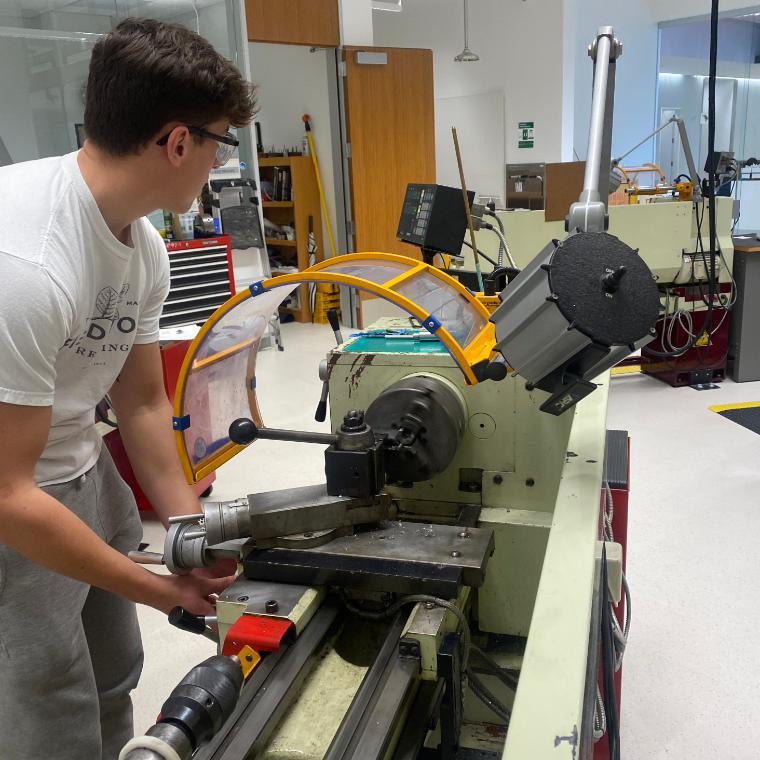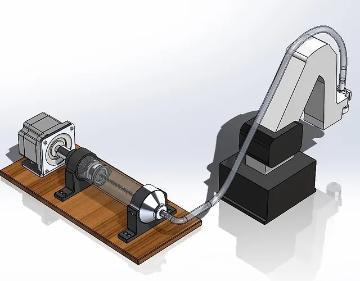
Robotic Arm Extrusion End Effector
Meet the interdisciplinary team of seniors tackling a critical issue in fields ranging from construction to medical devices, mass production, and highly detailed work. The group, comprised of seniors Nico Figueroa (Mechanical Engineering), David Blouin (Electrical and Computer Engineering), Nick Viamin (Electrical and Computer Engineering), and Savannah Hunt (Mechanical Engineering) under the advisement of Professors Andy Wolfe and Peter Woytowitz, came together to address the challenges associated with using materials such as ceramics and cement. Their Robotic Arm End Effector is designed to specialize in extruding highly viscous materials.

The Robotic Arm End Effector works by dispensing the material in a precise and controlled manner. The arm can be programmed to follow a specific path, ensuring the material is dispensed accurately. The end effector also includes a number of safety features to protect workers from exposure to toxic materials. The team believes that their Robotic Arm Extrusion End Effector has the potential to innovate the way that problematic substances are dispensed. They believe it can significantly impact various industries by reducing exposure to hazardous materials leading to better working conditions. The team continues to study and test the technology.